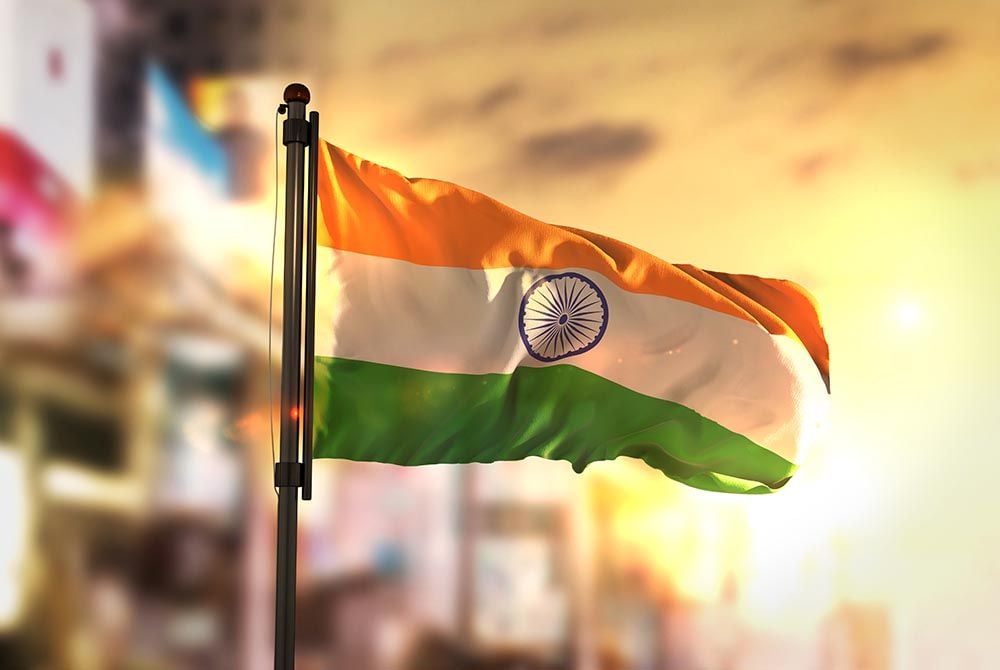The Indian Rupee Stabilises after Reserve Bank of India Raises Interest Rates for Second Time in 2018
- Written by: James Skinner
-INR sees volatile trading after RBI hikes rates a second time.
-Rate hike comes in wake of 2018 surge in Indian inflation.
-RBI hint that further hikes to be limited keeps a lid on the INR.

© Natanael Ginting, Adobe Stock
The Rupee was volatile Wednesday after the Reserve Bank of India raised its interest rate for a second time in 2018 but hinted to markets that further tightening of monetary policy is far from guaranteed for the months ahead, ultimately leaving the Indian currency little changed for the session.
India's central bank raised both its main interest rates Wednesday, taking the repo rate up to 6.5% and the reverse repo rate up to 6.25%. This is a 25 basis point increase to the rates received by lenders who park money at the central bank and the cost of borrowing from India's "lender of last resort".
Markets were well prepared for the change, with 37 out of 63 analyst polled by Reuters last week all predicting the RBI would hike rates for only the second time since 2014. This left traders fixated on details within the accompanying statement for clues as to where Indian monetary policy might be headed next.
"The swiftness with which the central bank has responded to the jump in inflation should prevent the need for very aggressive policy changes in the future," says Shilan Shah, a senior India economist at Capital Economics. "That should help keep a lid on inflation expectations, which should help to ensure that the days of very high and sustained inflation remain behind us. As such, we don’t think that the hiking cycle has too much further to run."
The RBI already raised its interest rates once, back in June, citing rising inflation and an increase in expectations of future price pressures. Indian inflation subsequently rose to 5% during June while core inflation, which removes volatile food and energy items from the goods basket, rose to 6.4%.
But the RBI is required to keep inflation at 4%, plus or minus 2% in either direction, over the medium term. This, and the strong rise in core-inflation, means further rate hikes were all but inevitable particularly as the RBI itself warned in June that inflation risks remained to the upside.
The USD/INR rate was quoted 0.08% higher at 68.50 following the announcement, after having whipsawed between 68.60 and 68.45, while the Pound-to-Rupee rate was 0.07% higher at 89.84.
Indian inflation has been pushed higher this year by a weaker Rupee, which has fallen 7% against the US Dollar and nearly 5% against the Pound, and by a now-10% increase in oil prices for 2018.
Changes in agricultural commodity prices are also an important, but volatile, influence on inflation. Analysts are now questioning how much further the RBI will raise Indian interest rates from here.
A robust performance from the Indian economy has also been a source of upward pressure on inflation. Indian GDP rose at an annualised pace of 7.7% during the first-quarter of 2018, its fastest pace for more than two years, and is forecast by the RBI to remain close to this level over the next 18 months.
"Inflation is projected at 4.6 per cent in Q2, 4.8 per cent in H2 of 2018-19 and 5.0 per cent in Q1:2019-20, with risks evenly balanced," the RBI says in its statement Wednesday. "GDP growth projection for 2018-19 is retained, as in the June statement, at 7.4 per cent, ranging 7.5-7.6 per cent in H1 and 7.3-7.4 per cent in H2, with risks evenly balanced; GDP growth for Q1:2019-20 is projected at 7.5 per cent."
Capital Economics' Shah has been forecasting that India's central bank will raise interest rates for a third time this year, likely in December 2018, which would leave the repo rate sat at 6.75% and the reverse repo at 6.5%. However, Shah's verdict now is that December's anticipated hike will be as far as the current RBI tightening cycle goes.
"With the US dollar continuing to strengthen, the rupee has weakened further, depreciating another 2.5% against the US dollar since the June review. From the start of the year, the rupee has fallen about 7% against the US dollar (which is important given the primacy of the US dollar in invoicing) and 3% on a nominal trade-weighted basis through June," says Sajjid Chinoy, an economist at J.P. Morgan. "We believe this nominal and real depreciation is much needed to restore competitiveness, but will have some inflationary consequences that are likely to keep core momentum firm."
The J.P Morgan team and a host of other analysts forecast that, despite the RBI's interventions, the Indian Rupee will still depreciate further against the US Dollar and Pound before the 2018 year is out.
Advertisement
Get up to 5% more foreign exchange by using a specialist provider to get closer to the real market rate and avoid the gaping spreads charged by your bank when providing currency. Learn more here
